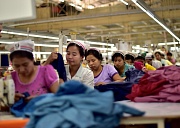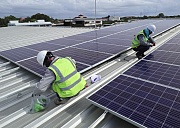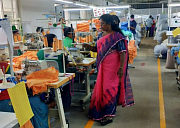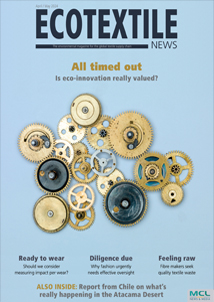The whole regulatory edifice is being built on the wrong foundations
Unfortunately, that is not happening. All impact assessments related to the EU waste framework directive (EPR system etc.) or the Ecodesign for Sustainable Products Regulation (ESPR) include the 10% emission figure as a baseline. The whole regulatory edifice is being built on the wrong foundations.
And secondly, when other negative environmental and social impacts of the fashion industry, rather than CO2 emissions are the real concern, they should be addressed very specifically and at the level where they occur.
If we want to address desertification, biodiversity, agricultural land degradation or poverty of farming communities in cotton growing countries or do something about water pollution from textile dyeing or poor pay and labour conditions in garment factories in developing countries, let’s engage the brands and retailers in Europe or North America that source from these regions, and support moves to implement stricter laws and enforcement measures.
However, don’t coerce or shame consumers into believing that buying a dress or a t-shirt will prevent climate-related floods in Europe or South-east Asia, or wildfires in North America or Australia.
Where to go from here?
In many publications, the 10% fashion GHG emission claim is only the first half of the sentence. The statement then typically says ‘and they may increase a further 50% until 2030’.
It seems this claim also comes out of the Quantis study where it reads: “This is manifest in the projected 49% increase from baseline (2016) in terms of projected climate change impacts for 2030…”. If there is a risk of something growing cumulatively by about 50% between 2016 and 2030, this translates into a growth rate of just under 3% pa. This has been the approximate annual textile fibre production growth rate over the last few decades, and so it is not unreasonable to project a continuation of such growth until 2030.
However, if someone makes the same claim in 2023 that the current emissions will grow by 50% in a matter of just seven years until 2030, they’re assuming a rather unrealistic 6% annual growth rate.
It doesn’t stop there. There are regular projections that fashion will be responsible for 25% of global GHG emissions by 2050. This seemingly goes back to a 2017 report of Ellen MacArthur Foundation in which it is stated that “If the fashion industry continues on its current path, by 2050 it could use more than 26% of the carbon budget associated with a 2C global warming limit.”
This means something quite different from saying by 2050 the fashion industry will be responsible for 25% of global GHG emissions, but it may get a little too technical to unravel this here. Let’s just say that if the fashion industry is very far from the 10% it is widely believed to emit today, it will be even further away from the 25% contribution in 2050, unless we very strategically cluster all textile and clothing production close to the (hopefully few) coal-fired power plants remaining at that time.
This doesn’t prevent activists from using nonsensical figures nor policy makers to build industry regulation on these inaccuracies
Yet this doesn’t prevent activists from using such nonsensical figures nor policy makers to build industry regulation on these inaccuracies – such as France’s environmental labelling scheme introduced earlier this year, which was defended by the country’s then state secretary for the environmental transition with the exact “25% GHG emissions by 2050” claim.
It's time to get our priorities right. Transitioning energy generation systems from coal and gas to nuclear and renewables has a real impact on global GHG emissions and so has the electrification of the transport system or the conversion of steel-making from blast furnace to electric arc furnace.
And as the global energy and transport systems lower their carbon footprint, so will the fashion industry that uses energy to convert raw materials into final products and transports them to their global consumers who will then run their washing machines on lower carbon electricity too.
Let’s instead focus our energies and actions on local and regional pollution and poverty problems that are truly created by the fashion industry and that should and can be cleaned up sooner rather than later.



































































































